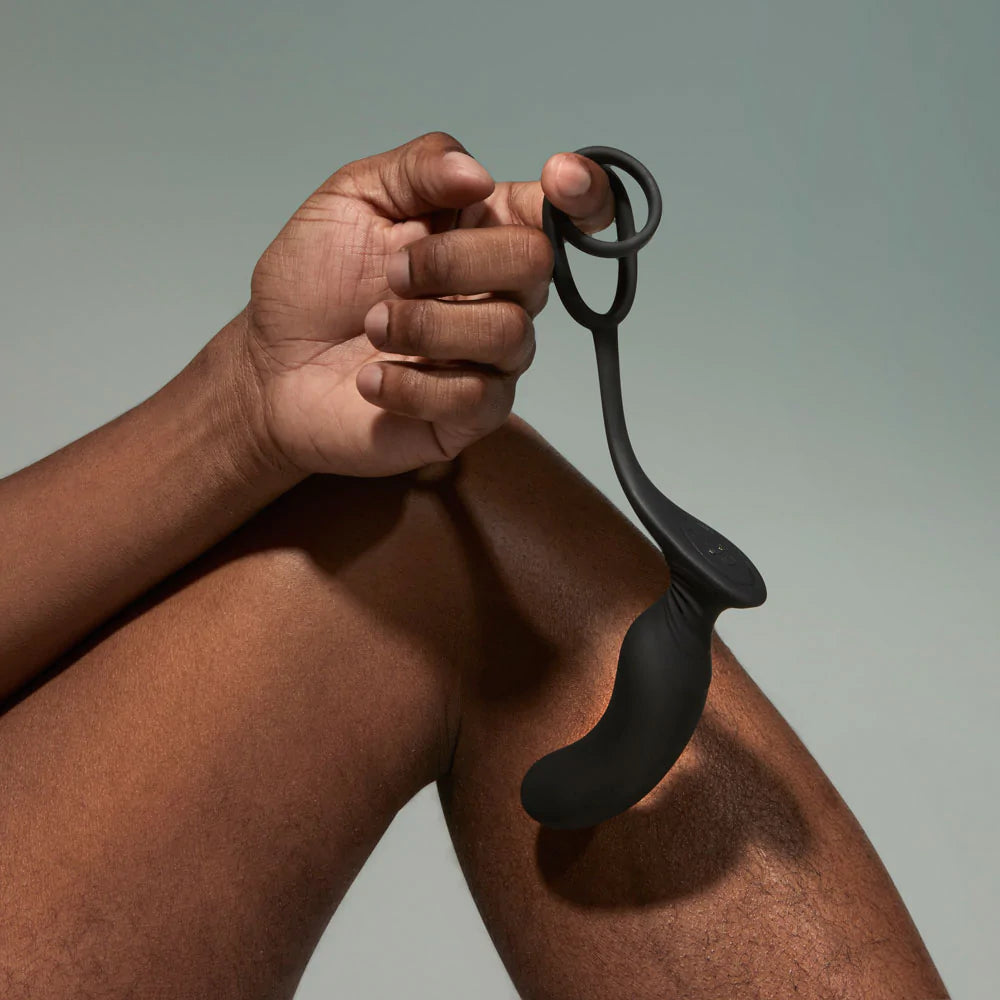Get our Beginner's Guide to Prostate Massage and 15% off your order.

If you are an AMAB person, you were probably warned of the dangers of prostate cancer from a young age. It’s best to be aware of the signs and risks of prostate cancer because it is the most common type of cancer, besides skin cancer, that occurs in AMAB people.
So, although the statistics may seem a little frightening, there are tests for screening for prostate cancer that can catch it early before it spreads to other parts of the body. When caught early enough, at stage 1, prostate cancer is relatively easy to treat and has a nearly 100 percent survival rate.
We have outlined the best ways to test yourself for prostate cancer and which test is the most accurate.
What Causes Prostate Cancer?
Since prostate cancer affects 1 out of 8 AMAB people at some point in their lifetime, you might wonder what causes prostate cancer. Although there are some ties between diet and the risk of prostate cancer, there is no known cause.
However, there is a known correlation between age and prostate cancer. About 60 percent of all prostate cancer diagnoses are in people over 65, with diagnoses in those aged 30 to 50 generally uncommon. There is no hard reason for this correlation, but it could be from prostate growth or hormone changes.
Prostate Cancer Symptoms

Watching out for the warning signs of prostate cancer is incredibly important. If you notice unusual symptoms, you should see your doctor immediately for a prostate exam, giving you much more accurate results.
Your prostate sits next to your urethra, so complications with urination are a common warning sign of prostate cancer. These signs can include blood in your urine, painful urination, inability to urinate or incontinence, or decreased force of urination.
A simple urine test can determine if there is blood in your urine. Other common symptoms include body aches, weight loss, and erectile dysfunction.
Prostate Tests
If you notice any of these symptoms, you should go to your healthcare provider for a prostate exam or screening test. A variety of prostate cancer tests can be done, each with a different level of accuracy. Your doctor will likely ask if you have a family history of prostate cancer or other cancer risk factors and then do one or more of the following tests.
DRE
A digital rectal exam is the most common and simplest prostate exam that your doctor can perform. When you see your doctor for a routine prostate check-up, this is the exam that they will usually conduct.
Your doctor will typically have you either bend over at the waist or lay on your side with your knees close to your chest for them to access your prostate gland easily. Your doctor will insert a gloved, lubed finger into your rectum and feel your prostate.
They can tell you if it feels normal or if they notice something off such as an enlarged prostate. If your doctor feels prostate enlargement or any other concerning signs, they may recommend another exam. A DRE could be considered the first level of accurate prostate exams and can help catch cancer in the early stages.
PSA
If your doctor suggests you need further testing after a DRE, they will most likely suggest a PSA blood test. This exam measures the levels of PSA, or prostate-specific antigens, in your bloodstream through a blood test.
The prostate produces PSA, and high levels of PSA or prostate cancer cells in your bloodstream could indicate prostate cancer.
To conduct this exam, your doctor will take a blood sample from you and send it to a laboratory for testing. Once the results return, your doctor can discuss your levels and their meaning.
If your test results show high PSA levels, it could result from prostate cancer or other factors such as recent ejaculation, hormone fluctuation, old age, or inflamed prostate.
Because an increase in PSA levels and prostate cancer is not a 1:1 correlation, your doctor may suggest further testing to screen for prostate cancer if your levels are high. A PSA test could be considered the second level of accurate prostate exams.
Biopsy

If your doctor notices abnormalities in your PSA exam, they might suggest getting a biopsy. A prostate biopsy uses small needles to take a tissue sample from the prostate and observe the tissues under a microscope. This test can definitively check for cancer and determine the stage it is in.
You might be given antibiotics before or after the exam to prevent infection at the biopsy site. The most common form of prostate biopsy is a TRUS biopsy. To complete this biopsy, you will lay on your side with your knees to your chest as a doctor puts a lubed ultrasound probe in your anus.
You will receive an anesthetic injection to reduce pain before the doctor uses a needle to take 10 to 12 small pieces of tissue from your prostate. This process may sound scary or intimidating, but it should only last five to 10 minutes. It will give you a guaranteed answer of if you have prostate cancer or not, which means that this test could be considered the third and highest level of accurate prostate exams.
Your doctor or urologist will want to avoid unnecessary biopsies though, and will do other tests before taking this route.
How To Keep Your Prostate Healthy

Although it’s difficult to avoid the risk of this common cancer entirely as an AMAB person, there are things you can do in your daily life to reduce your chances of getting a diagnosis of prostate cancer.
Diet and Exercise
There has been much research into the correlation between a person’s diet and the likelihood of getting prostate cancer. Research has shown that a person whose diet consists mainly of meat and dairy has a higher chance of prostate cancer.
You should ensure you consume meat and dairy moderately and incorporate lots of veggies, fruits, and plant-based protein into your daily meals.
There has also been evidence to suggest that people who eat a diet high in fiber will have a reduced risk of receiving a prostate cancer diagnosis. You can up your fiber intake by incorporating legumes, whole grains, fruits, nuts and seeds, and leafy greens into your diet.
Lastly, there is research into the relationship between exercise and prostate cancer. It has been suggested that people who exercise two to four times a week, with low or high impact, are at a reduced risk of prostate cancer.
Prostate Massages

Another major tool you can use to keep your prostate healthy is by receiving frequent prostate massages. Prostate massages can keep inflammation of your prostate to a minimum and reduce your risk of prostate cancer.
You can give yourself routine prostate massages or incorporate them into your intimacy practice with your partner.
You can use your fingers to massage your prostate by sticking one or two lubed fingers into your anus, pointing them towards your belly button to locate the prostate, and stimulating it in whatever way feels best for you.
However, a great hands-free option for prostate massages is to use prostate massagers. These are designed to fit comfortably inside the anus and stimulate the prostate with vibration patterns. Some options wrap around your penis and balls for extra stimulation.
Test Is Best
Be sure to stay on top of your prostate health by being cognizant of unusual symptoms and receiving regular prostate exams after you turn 40.
There are plenty of tests with differing accuracy levels that your doctor might use to screen for prostate cancer, but always schedule an appointment if you notice anything strange. And with the advances in cancer research and prostate cancer treatment options available, you’re in good hands.
Be kind to your behind, and get a test when necessary.
Sources:
Key Statistics for Prostate Cancer
Prostate Cancer Survival Rates
Transrectal ultrasound scan (TRUS) and biopsy for prostate cancer)











